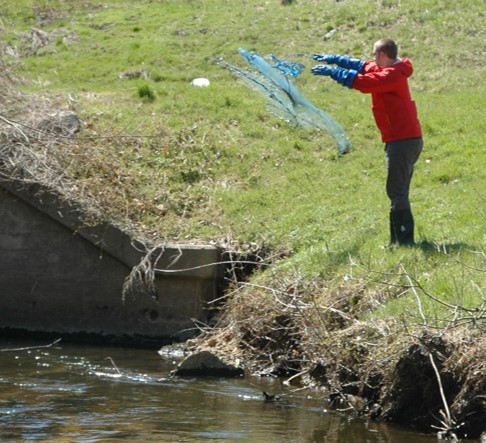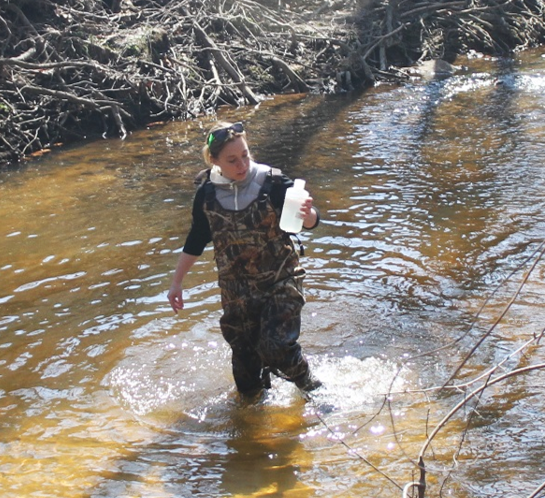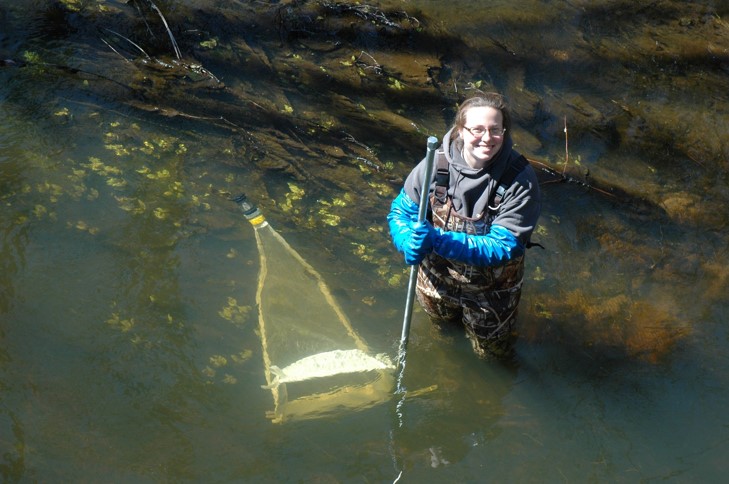- Home
- Research
- Projects
- Identifying spawning habitat
- Identifying spawning habitat
Identifying spawning habitat

We and our partners have traveled to over 200 sites in twelve Chesapeake Bay tributaries in Maryland and Virginia during spring in 2015 and 2016 to assess the presence or absence of river herring. We catch and release adult fish when possible to confirm the species, collect an ichthyoplankton (fish eggs and larvae), and collect a water sample for detecting the presence of river herring DNA.
We’d like to give special thanks to all of the land-owners who gave us permission to access streams on their property. Your assistance is helping to make our project a success.
We also thank all of the volunteers and volunteer scientists who have helped us with this study. Your role is important to the success of understanding spawning requirements and population dynamics of river herring. From field sampling and data collection, to processing samples in the lab, your role is vital in helping us achieve our conservation and restoration goals.
Participatory Science Involvement

SERC's volunteer scientists are critical participants in our habitat use sampling program, both in the field and in the lab. If you are interested in this project and want to contribute, please consider becoming a volunteer scientist. Visit the River Herring Participatory Science page for information about the participatory science aspect of this study and how to sign up.
Ichthyoplankton sampling

We collect ichthyoplankton (fish eggs and larvae) samples using a plankton net. These samples are sorted in the lab using a dissecting scope to determine the presence and abundance of river herring eggs and larvae.
Environmental DNA (eDNA)

We collect water samples at all of our river herring sites. With Dr. Louis Plough at the UMCES Horn Point Laboratory, we are developing a tool to detect the presence and relative abundance of river herring DNA in water samples. This method has great potential to increase the efficiency and reduce the cost of monitoring river herring spawning populations.
